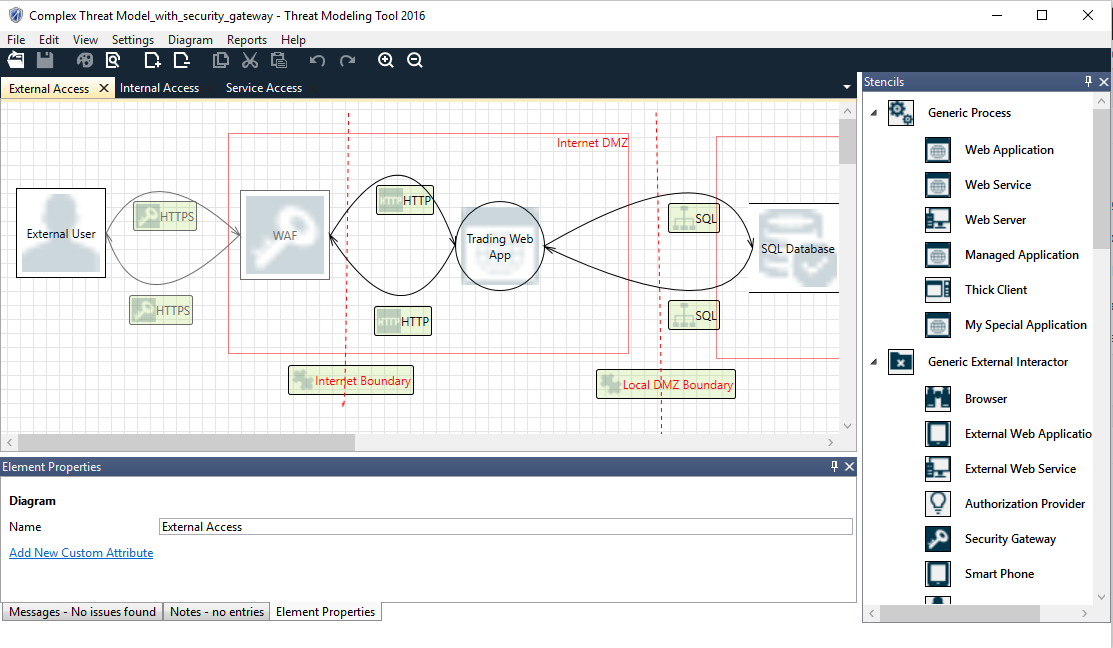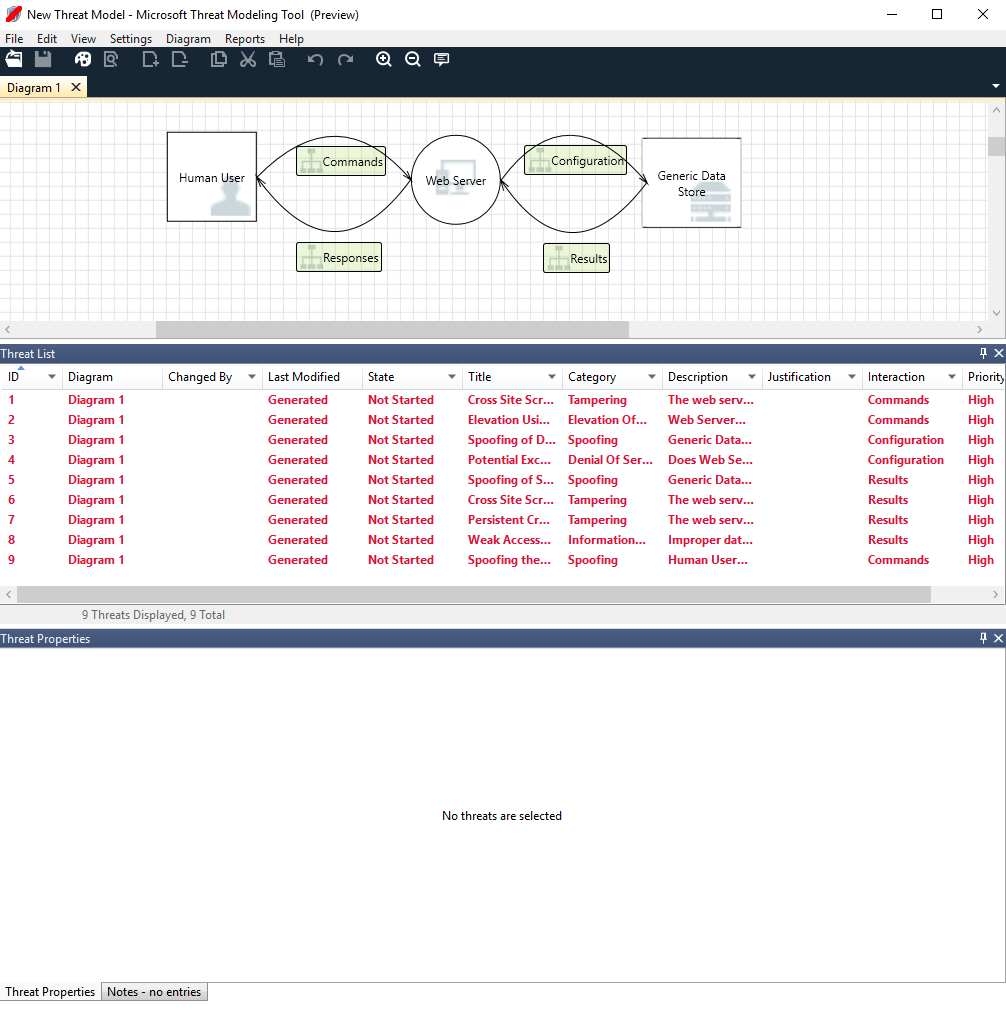- Microsoft Threat Modeling Tool License
- Microsoft Threat Modeling Tool Uses __ Threat Classification Scheme

- The Threat Modeling Tool is a core element of the Microsoft Security Development Lifecycle (SDL). It allows software architects to identify and mitigate potential security issues early, when they are relatively easy and cost-effective to resolve. As a result, it greatly reduces the total cost of development.
- Microsoft Threat Modeling Tool Templates. The SAE M3061 regular 5 will be the nearly all prominent i actually n the business to define secure advancement process n or cy ber-physical vehicle systems. It builds on ISO 26262 and expects to enhance the security procedure with safety process with conversation factors between the two engineering.
- Sep 12, 2018 Microsoft Windows 10 Anniversary Update or later.NET Version Required.NET 4.7.1 or later; Additional Requirements An Internet connection is required to receive updates to the tool as well as templates. Documentation and feedback. Documentation for the Threat Modeling Tool is located on docs.microsoft.com, and includes information about using.
Download and install Microsoft Threat Modeling Tool. Open the tool and choose.tb7 file in 'Template For new Models' field. Create A Model or open the example.
Microsoft Threat Modeling Tool License
The Threat Modeling Tool is a core element of the Microsoft Security Development Lifecycle (SDL). It allows software architects to identify and mitigate potential security issues early, when they are relatively easy and cost-effective to resolve. As a result, it greatly reduces the total cost of development. Also, we designed the tool with non-security experts in mind, making threat modeling easier for all developers by providing clear guidance on creating and analyzing threat models.
The tool enables anyone to:
- Communicate about the security design of their systems
- Analyze those designs for potential security issues using a proven methodology
- Suggest and manage mitigations for security issues
Here are some tooling capabilities and innovations, just to name a few:
- Automation: Guidance and feedback in drawing a model
- STRIDE per Element: Guided analysis of threats and mitigations
- Reporting: Security activities and testing in the verification phase
- Unique Methodology: Enables users to better visualize and understand threats
- Designed for Developers and Centered on Software: many approaches are centered on assets or attackers. We are centered on software. We build on activities that all software developers and architects are familiar with -- such as drawing pictures for their software architecture
- Focused on Design Analysis: The term 'threat modeling' can refer to either a requirements or a design analysis technique. Sometimes, it refers to a complex blend of the two. The Microsoft SDL approach to threat modeling is a focused design analysis technique

Next steps
The table below contains important links to get you started with the Threat Modeling Tool:See also: System requirements
| Step | Description |
|---|---|
| 1 | Download the Threat Modeling Tool |
| 2 | Read Our getting started guide |
| 3 | Get familiar with the features |
| 4 | Learn about generated threat categories |
| 5 | Find mitigations to generated threats |
Resources
Here are a few older articles still relevant to threat modeling today:
Check out what a few Threat Modeling Tool experts have done:
-->Version 7.3.00714.2 of the Microsoft Threat Modeling Tool (TMT) was released on July 14 2020 and contains the following changes:
- Accessibility improvements
System requirements
Microsoft Threat Modeling Tool Uses __ Threat Classification Scheme
- Supported Operating Systems
- Microsoft Windows 10 Anniversary Update or later
- .NET Version Required
- .NET 4.7.1 or later
- Additional Requirements
- An Internet connection is required to receive updates to the tool as well as templates.
Documentation and feedback
- Documentation for the Threat Modeling Tool is located on docs.microsoft.com, and includes information about using the tool.

Next steps
Download the latest version of the Microsoft Threat Modeling Tool.